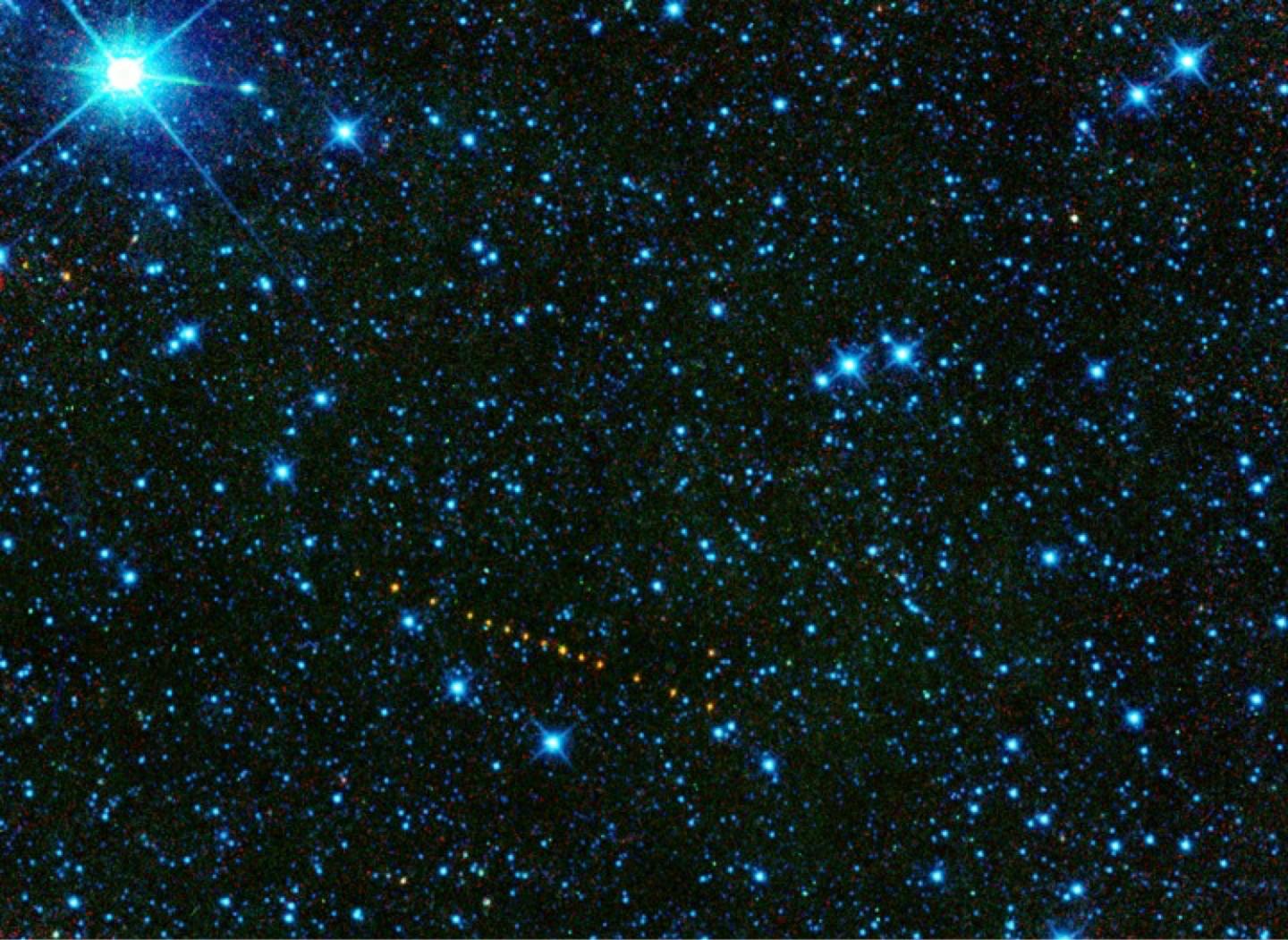The trick is spotting the near-Earth objects first, according to NASA researchers presenting at the 2019 APS April meeting in Denver

Credit: NASA
WASHINGTON, D.C., April 16, 2019 — A mere 17-20 meters across, the Chelyabinsk meteor caused extensive ground damage and numerous injuries when it exploded on impact with Earth’s atmosphere in February 2013.
To prevent another such impact, Amy Mainzer and colleagues use a simple yet ingenious way to spot these tiny near-Earth objects (NEOs) as they hurtle toward the planet. She is the principal investigator of NASA’s asteroid hunting mission at the Jet Propulsion Laboratory in Pasadena, California, and will outline the work of NASA’s Planetary Defense Coordination Office this week at the American Physical Society April Meeting in Denver — including her team’s NEO recognition method and how it will aid the efforts to prevent future Earth impacts.
“If we find an object only a few days from impact, it greatly limits our choices, so in our search efforts we’ve focused on finding NEOs when they are further away from Earth, providing the maximum amount of time and opening up a wider range of mitigation possibilities,” Mainzer said.
But it’s a difficult task — like spotting a lump of coal in the night’s sky, Mainzer explained. “NEOs are intrinsically faint because they are mostly really small and far away from us in space,” she said. “Add to this the fact that some of them are as dark as printer toner, and trying to spot them against the black of space is very hard.”
Instead of using visible light to spot incoming objects, Mainzer’s team at JPL/Caltech has leveraged a characteristic signature of NEOs — their heat. Asteroids and comets are warmed by the sun and so glow brightly at thermal wavelengths (infrared), making them easier to spot with the Near-Earth Object Wide-field Infrared Survey Explorer (NEOWISE) telescope.
“With the NEOWISE mission we can spot objects regardless of their surface color, and use it to measure their sizes and other surface properties,” Mainzer said.
Discovering NEO surface properties provides Mainzer and her colleagues an insight into how big the objects are and what they are made of, both critical details in mounting a defensive strategy against an Earth-threatening NEO.
For instance, one defensive strategy is to physically “nudge” an NEO away from an Earth impact trajectory. But to calculate the energy required for that nudge, details of NEO mass, and therefore size and composition, are necessary.
Astronomers also think that examining the composition of asteroids will help to understand how the solar system was formed.
“These objects are intrinsically interesting because some are thought to be as old as the original material that made up the solar system,” Mainzer said. “One of the things that we have been finding is that NEOs are pretty diverse in composition.”
Mainzer is now keen to leverage advances in camera technology to aid in the search for NEOs. “We are proposing to NASA a new telescope, the Near-Earth Object Camera (NEOCam), to do a much more comprehensive job of mapping asteroid locations and measuring their sizes,” Mainzer said.
NASA is not the only space agency trying to understand NEOs. For instance, the Japan Aerospace Exploration Agency’s (JAXA’s) Hayabusa 2’s mission plans to collect samples from an asteroid. And in her presentation Mainzer will explain how NASA works with the global space community in an international effort to defend the planet from NEO impact.
###
The presentation, “NASA’s Planetary Defense Coordination Office at NASA HQ,” will take place at 10:45 a.m. MT, Tuesday, April 16, in room Governor’s Square 14 of the Sheraton Denver Downtown Hotel. ABSTRACT: http://meetings.
MORE MEETING INFORMATION
USEFUL LINKS
Register as Press: https:/
Main Press Page: https:/
Main Meeting Page: https:/
Hotel Information: https:/
PRESS REGISTRATION
APS will provide free registration to all staff journalists representing media organizations, professional freelance journalists on assignment, and student journalists who are attending the meeting for the express purpose of gathering and reporting news and information. Press registration grants full access to all scientific sessions, to the press room, and to the press conferences. We will also provide complimentary press registration to university press officers, PIOs and other professional media relations staff.
Press registration grants full access to all scientific sessions, to the press room, and to the press conferences. Press credentials are approved at the sole discretion of APS. For press related questions about the APS April Meeting, email [email protected]>.
PRESS CONFERENCES
A series of press conferences will be held during the meeting at the Sheraton Denver Downtown Hotel. The press conferences will be live webcast, and members of the media who are unable to attend the meeting in person may register to view the live webcasts at https:/
ABOUT APS
The American Physical Society is a nonprofit membership organization working to advance and diffuse the knowledge of physics through its outstanding research journals, scientific meetings, and education, outreach, advocacy, and international activities. APS represents over 55,000 members, including physicists in academia, national laboratories, and industry in the United States and throughout the world. Society offices are located in College Park, Maryland (Headquarters), Ridge, New York, and Washington, D.C. https:/
Media Contact
APS Media Line
[email protected]




